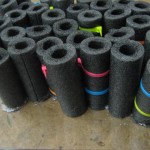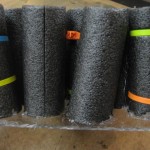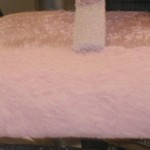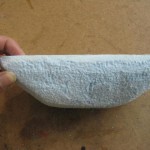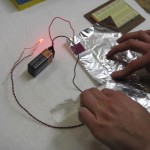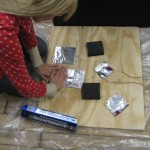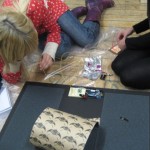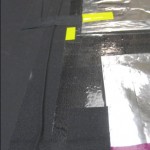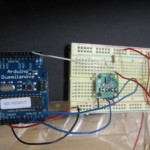Saturday, November 7, I went to The Kitchen with a friend to see a double performance by Nancy Garcia and Chase Granoff. Nancy Garcia is also a graduate of ITP.
As far as Chase Granoff’s work, “The Art of Making Dances”, I quite liked it. I found it easy to “get” quickly, in that I found it both entertaining and provoking in a non-intimidating way. They were offering a copy of The Art of Making Dances after the show. I didn’t get it because, well, mostly because I didn’t want to spend $10. Maybe if it had been $8 or $9, I would have bought it. Plus, I wasn’t alone and I didn’t want to hold up my friend. We were hungry.
As far as Nancy’s work, “I need more”, I really wanted to like this particular performance a lot more than I did. Maybe I was hoping for something that better fit my particular aesthetic needs, or maybe I was hoping for something I could connect with on a more immediate level. For instance, I would have liked to see more of an emotional statement with the choreography, as well as more cohesiveness between the dance sections. Although the four parts flowed one to the other, I also had a feeling of choreographic separation between the parts, but maybe that was done purposefully. In addition, I also did not appreciate the how loud music/sound was, and I didn’t understand the purpose of the singing. On the other hand, my exposure to the type vocal performance she was doing is still quite limited, so I guess I would have always a difficult time connecting with anyone’s show that involved that type of sound/vocal performance. I’m still learning, so there’s still time.
Anyway, none of these things really turned me off to her work, and I only offer these critiques as audience feedback (should she ever check out my blog). In viewing her website, I found her other work interesting and I’m impressed by her continued activity as a dancer, so if I have a chance to see her work in the future I’ll probably take it.
In any case, before I wrote this post, I checked my Gmail account and found the email Nancy sent to me regarding ITP. I asked her advice regarding ITP and she really wrote the most comprehensive and useful response of all the people I talked to about ITP. I wish I had looked it up when I was selecting classes this semester because it was really good advice. Well, I won’t post her answers but I will post my questions:
Hi Nancy,
Midori Yasuda sent me your contact info regarding the ITP at NYU. She
also sent me a link to your thesis, and I thought it was really very
interesting.
I plan to apply to ITP. My background is in dance and human-computer
interaction/usability. I’m interested in this program because I have
been looking for a way to synthesize dance and technology; although I
do not dance as much as I used to, I still have a passion for the art.
Your thesis seems very similar to an example something I might like to
pursue.
If you don’t mind, I have some questions that I’d like to ask:
————————————————————————-
I’m interested to learn more about what led you to ITP? Did you have
any doubts?
What have you been up to since graduation? Did you have a plan for
what you wanted to do after graduating?
What types of ideas did you want to explore?
How difficult was it to pursue study in movement, dance and
technology? What were some of the challenges? highlights?
How challenging did you find the more technical aspects of the program?
Is this still something you are pursuing?
If this was my focus at ITP, do you have any advice for me?
How did you come up with your thesis?
Tuition is a big factor for me. How did you deal with tuition costs?
Are you aware of any scholarships or grants for dance-based work in
technology?
Now that you’ve graduated, what is your opinion of the experience?
Would you do it again? Is there anything you’d change?”

